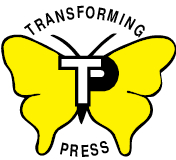CATHARSIS IN REGRESSION HYPNOTHERAPY
Transcripts of Transformation Volume II
by Randal Churchill
Author of Regression Hypnotherapy, Volume I and Become the Dream
Return to Catharsis in Regression Hypnotherapy Page | Order the Book

Preface
This volume completes the Regression Hypnotherapy set, focusing on the cathartic expression of emotions that can occur when working with regression. It is intended to follow and develop the comprehensive guidance given in the first volume.
Both volumes are filled with significant information on regression therapy which is not even touched on in most other books on this important subject. It includes detailed teaching of certain dynamic and priceless forms of the work, such as the integration of Gestalt and various uses of ideomotor methods. The use of regression is emphasized in ways that can frequently yield profound therapy. This study is intended for the therapist who is enrolled in or has received an extensive hypnotherapy training.
As in Volume I, theory is combined with a generous series of transcripts of actual sessions with commentary, giving the reader a close-up view of a wide variety of issues and situations in which the remarkable potential of this work is demonstrated. Unlike regression therapy styles that avoid or discourage emotions, working through emotional difficulties is recognized as an opportunity for deeper, more comprehensive therapy, increasing the possibility for profound transformation. The instruction in this volume will provide essential guidance for dealing with the especially intense expression of emotions that can often develop when using certain modalities during regression. However, difficult feelings and their expression are encouraged only if neutral questioning yields instruction from the client’s subconscious mind to be receptive to both memories and emotions having to do with the presenting issues and their underlying causes. When permission is not forthcoming, we can still do good work using techniques for detachment, as discussed in both volumes.
While the first volume includes many explorations of working through strong emotions, this book explores issues and examples of working through exceptionally strong expressions of emotion. Volume I also focuses on the fundamentals of regression work and discusses the valuable use of regression in conjunction with both detachment and non-traumatic exploration for self-discovery and insight.
Chapter 4 of this volume, Grounding and Centering for the Therapist, is especially applicable to the intensity of working with catharsis. The transcripts of Volume II deal exclusively with sessions that include cathartic expression and clearing work, with the exception of the final chapter. This is a relevant follow-up session in which the affect bridge to a major trauma led only to mild emotional clearing, a sign in this case of how far the client had come in her transformative process. Also, balance is provided by Chapter 2, Encouraging vs. Discouraging Emotions, and by Chapter 8, Explorations of Averting Catharsis, which illustrates in detail two sessions in which regression to trauma leads away from highly emotional expression.
Logic, balance and effective methods addressed the controversy of recovered memories in the initial volume. That is further developed in this volume via the careful non-leading methods of encouraging and working with recall within the transcripts, and specifically addressed in Chapter 12, Issues of Potential Sexual Abuse.
While all of the transcripts of the first volume were of age regression, that entire book was relevant to the subject of past life regression, in which memories relating to the self arise but appear as a lifetime in a previous time or place. While some forms of inductions for each kind of regression can be different, the therapeutic modalities that can be used for each form are essentially the same. There is much important material in both volumes that is not yet found in any book on past life regression.
Several latter chapters of this volume will directly focus on the subject of past life regression. This topic will be explored for its intrinsic value, and not to prove or disprove the validity of previous lifetimes. There are many avenues of thought regarding such recollections and all references will be, and need to be, approached with neutrality in doing therapeutic work. For the purpose of therapy, the energy that is affecting an individual as a result of some early or unconscious or traumatic experience can be communicated by the subconscious mind through imagery and metaphor. This is demonstrated by Hypnotic Dreamwork, detailed in my book, Become the Dream. Profound work can be done whether working with a recollected memory of an actual event or an age or past life regression metaphor. Effective procedures specific to such work will be discussed in Chapter 17, Regarding Past Life Regression, and demonstrated in Chapter 18, Corinna’s Self-Destruction and Chapters 19 and 21, Chris’ Terror and Chris’ Struggles with Work.
